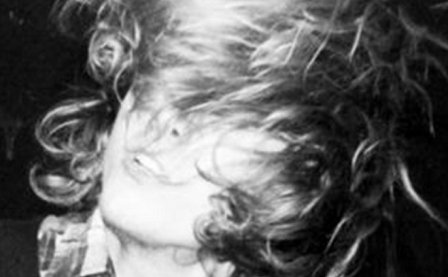I was raised in a time when bands and musicians would take, on average, anywhere from two to seven years to release an album. No, I don’t have any statistical data to show you, but I do remember assuming that once you had heard a band’s new album, you’d be waiting at least a full year’s time before you’d hear another. Probably some sort of a resulting industry timeline; maybe it’s a general cycle of the muse — who knows. What I do know is that prolificacy is generally taken as an outlying artistic production mode, as indicated by the sense of surprise when such events of prolificacy occur. It almost creates a niche category, in which artists of prolific nature are regarded in a special category, just for the sake of turning out a large body of work.
Take Ty Segall’s Twins as an example, released after two other albums from 2012: Hair with White Fence, and Slaughterhouse, recorded under the name of Ty Segall Band. Which is not to say that the new album isn’t noteworthy, considering that after 2011’s Goodbye Bread Segall was planning to make only one album of “evil, evil space rock.” Plus, like the garage-pop predecessors that Segall’s sound hearkens to (The Beatles between 1964 and 65, The Troggs’ first two records in the same year, etc., etc.), this sort of prolificacy is expected; it’s a genre that requires a hardworking aesthetic.
What makes Ty Segall interesting beyond prolificacy is his ability to both recall and ruin rock’s past. In an age where name-dropping takes on a form of proverbial hashtagging one’s apparent influences (while sounding nothing like them), Segall still works the importance of synthesis and subversion. Take an example from the album’s single, “The Hill;” there’s an apparent love for Spacemen 3 (if you don’t believe me, watch the video for “The Hill” after watching the video for Spacemen 3’s “Revolution,” taking notice of the coordinated power-chording), but for all its fuzziness, it has far too many parts and doesn’t take itself seriously enough to bear any marks of “Revolution” or, for that matter, any essence of Spacemen 3, beyond the generally appropriated mood. And then there’s the (possibly accidental) subversion of The Who in “Who Are You,” whose evidence I support not only with a shared title, but also shared lyrics: “What I really wanna know is…” Taking a song hammered into the collective post-classic rock pop consciousness by way of CSI, Segall takes any ideas left over from this “classic rock classic” and completely ruins it by intensifying it, cutting the instrumental excess, and forcing it into a way that The Who’s younger selves would have played the song, had they not grown old and full of themselves. Not to say that “Who Are You” or any of the songs on Twins are simplistic — hardly the case, as Segall occasionally dive-bombs his songs with drawn-out guitar screams. The nature of a guitar solo is to ruin a song; it deviates the melody and egotistically takes precedence over everything else. This is not unknown to Segall, who does not try to alleviate his guitar moments, but rather signals the point at which the song is intentionally destroyed.
Twins shows Segall in greater command of his craft. Whereas the songs on Goodbye Bread and the previous (and spectacular) Slaughterhouse would gradually fall out of control, here the dissipation feels deliberate, as if Segall were trying to drive the songs to their deaths. However, this presents the only problem with Twins, as the best garage rock tends to favor immediacy and accidents over control and perfection. My favorite albums of Segall’s have always struck that balance, songs that not only walked on their own, but also frantically ran away like angry children. The stronger tracks on Twins (“Inside Your Heart,” “The Hill,” “Handglams”) retain these elements, and like a lot of other great pop-minded albums, some tracks simply outshine others. This isn’t to say that Twins isn’t album-oriented — it’s stocked with reoccurring themes (ghosts, youthful love, the word “inside”) — but its focus as a whole seems behind his previous efforts: Slaughterhouse’s B-movie horror Fun House, Goodbye Bread’s California-dream mixed romanticism, and Segall and Mikal Cronin’s criminally underrated Reverse Shark Attack.
But do not take Twins as a drag. Restating the prolificacy act, it’s impressive that all three are strong releases. It just so happens that Slaughterhouse takes this year’s cake, that’s all. Even with great songs, an album is still the sum of its parts, and in this light, Twins feels like a singles comp rather than a complete piece. But to refer to my point at the beginning, Segall works his influences better than a great swathe of his contemporaries, and that alone makes Twins worth listening to.
More about: Ty Segall




